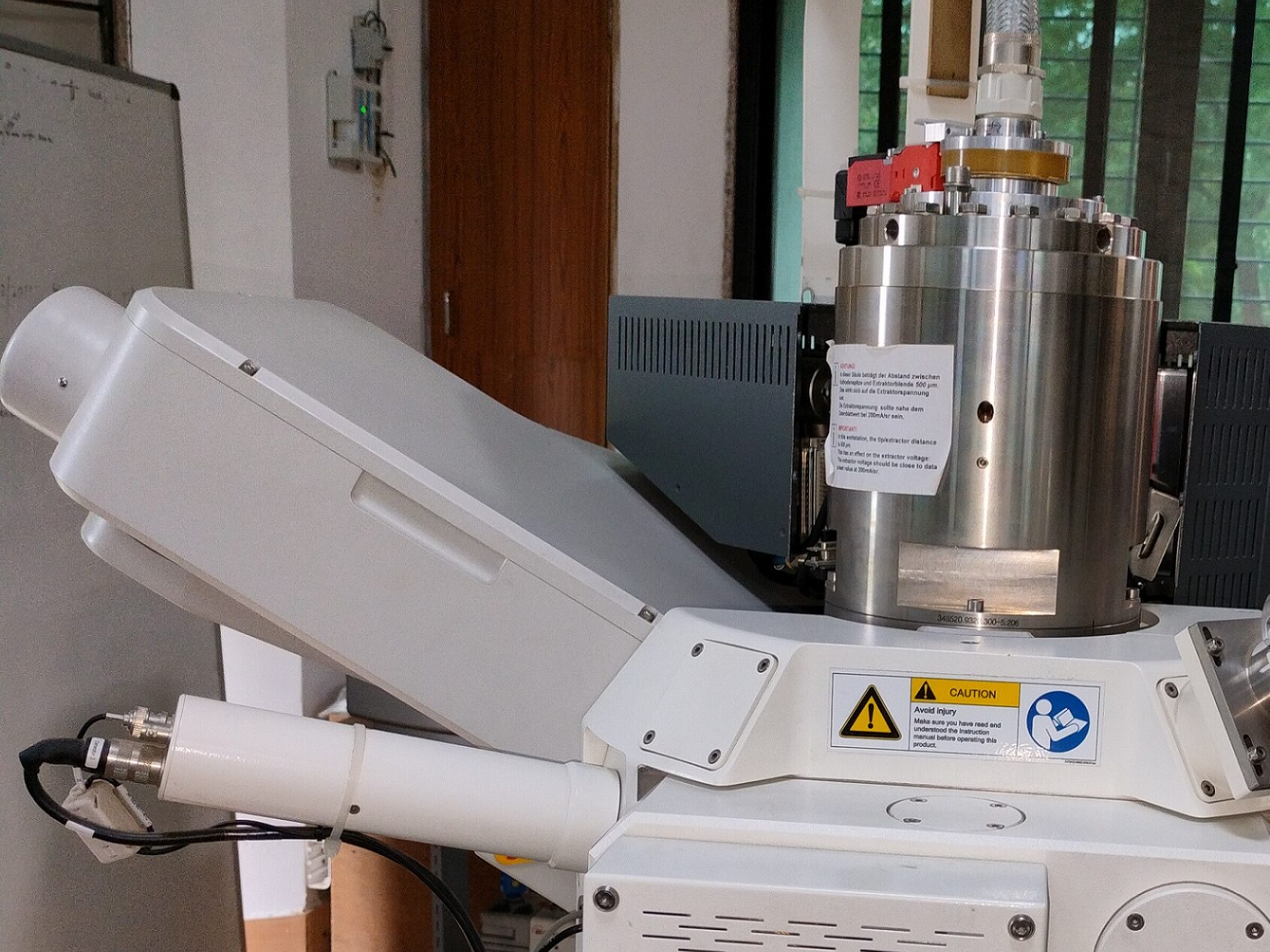Model
Gemini 360
Features
The BSE detector in the Gemini SEM360 is designed to capture high-energy electrons that are reflected or backscattered from the sample. BSE imaging provides contrast based on the atomic number of elements, making it useful for compositional analysis. Heavier elements appear brighter, allowing for differentiation between different materials within the sample.
Applications
1. Material Composition Analysis
- Atomic Number Contrast: BSE images are highly sensitive to variations in atomic number. Heavier elements backscatter more electrons, appearing brighter, while lighter elements appear darker. This contrast allows for the differentiation of regions with different compositions within a sample, such as in alloys, composites, or multiphase materials.
- Phase Identification: By analyzing the contrast in BSE images, different phases within a material can be identified based on their elemental composition, even when they are finely intermixed.
2. Microstructural Analysis
- Grain Boundary Analysis: BSE imaging can be used to highlight grain boundaries in metals and ceramics, aiding in the study of grain structure and its effects on material properties.
- Inclusion Detection: Inclusions, voids, and other features within a material that differ in composition from the surrounding matrix can be easily identified using BSE imaging.
3. Semiconductor Industry
- Layered Structures: BSE imaging is used to analyze layered structures in semiconductor devices. Differences in material composition between layers can be visualized, aiding in the assessment of fabrication quality.
- Defect Analysis: Identifies defects, such as voids or impurities, within semiconductor materials by utilizing atomic number contrast.
4. Geology and Mineralogy
- Mineral Differentiation: BSE imaging is employed to distinguish between minerals in rock samples based on their composition. This is particularly useful for identifying minerals that are difficult to differentiate using other imaging methods.
- Texture and Fabric Analysis: Geologists use BSE images to study the texture and fabric of rocks and minerals, providing insights into their formation history.
5. Biological and Medical Research
- Bone and Tissue Analysis: BSE imaging can be used to examine the distribution of elements in bone and tissue samples, providing information on composition and structure that is important for medical research and diagnostics.
- Biomedical Implants: Analyzes the composition and integrity of biomedical implants, ensuring that they are made from the correct materials and have not degraded in the body.
6. Forensic Science
- Residue Analysis: BSE imaging is used to analyze residues on various surfaces, helping to identify the presence and composition of materials in forensic investigations.
- Trace Evidence: BSE can reveal differences in the composition of trace evidence like gunshot residues or paint, aiding in forensic comparisons and identifications.
7. Archaeology and Art Conservation
- Analysis of Artifacts: BSE imaging helps in identifying the composition of artifacts, which is crucial for understanding ancient manufacturing techniques and for conservation efforts.
- Surface Analysis of Historical Objects: Provides detailed images of the surface of historical objects, revealing information about wear, corrosion, or restoration efforts.
8. Failure Analysis
- Corrosion and Oxidation Studies: BSE imaging is used to analyze corroded or oxidized areas of materials, helping to understand the cause and progression of failure.
- Fracture Analysis: Helps in examining fractures in materials, with the contrast provided by BSE highlighting differences in composition that may have contributed to the failure.
9. Quality Control in Manufacturing
- Coating and Plating Analysis: BSE imaging can be used to examine coatings and platings on materials, ensuring uniformity and correct application.
- Material Homogeneity: Assesses the homogeneity of materials by detecting compositional variations, ensuring consistency in manufacturing processes.
Handled By Er. Atul Singh
atul.singh@iiti.ac.in


